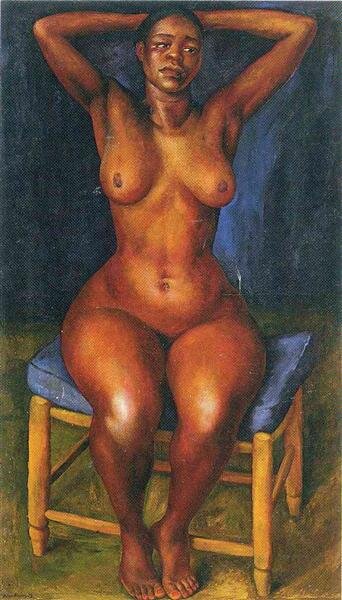
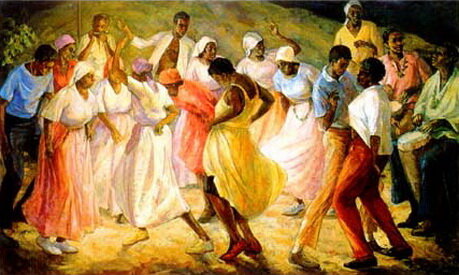
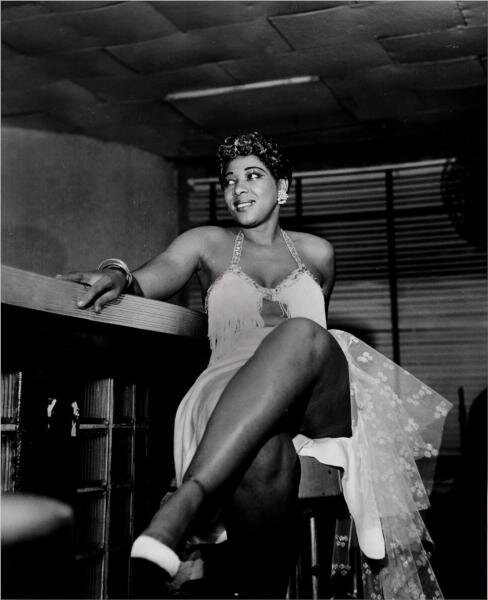
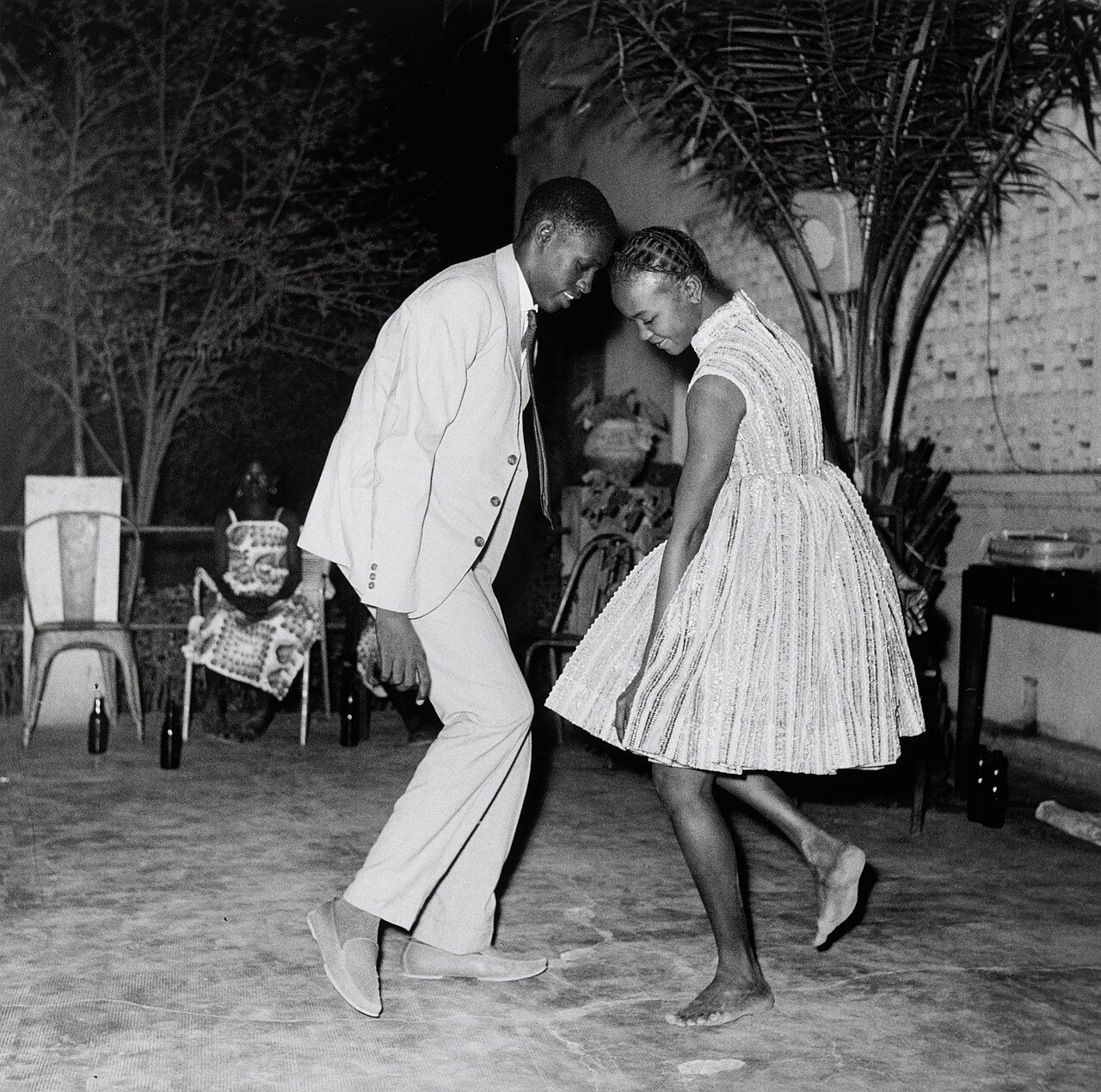
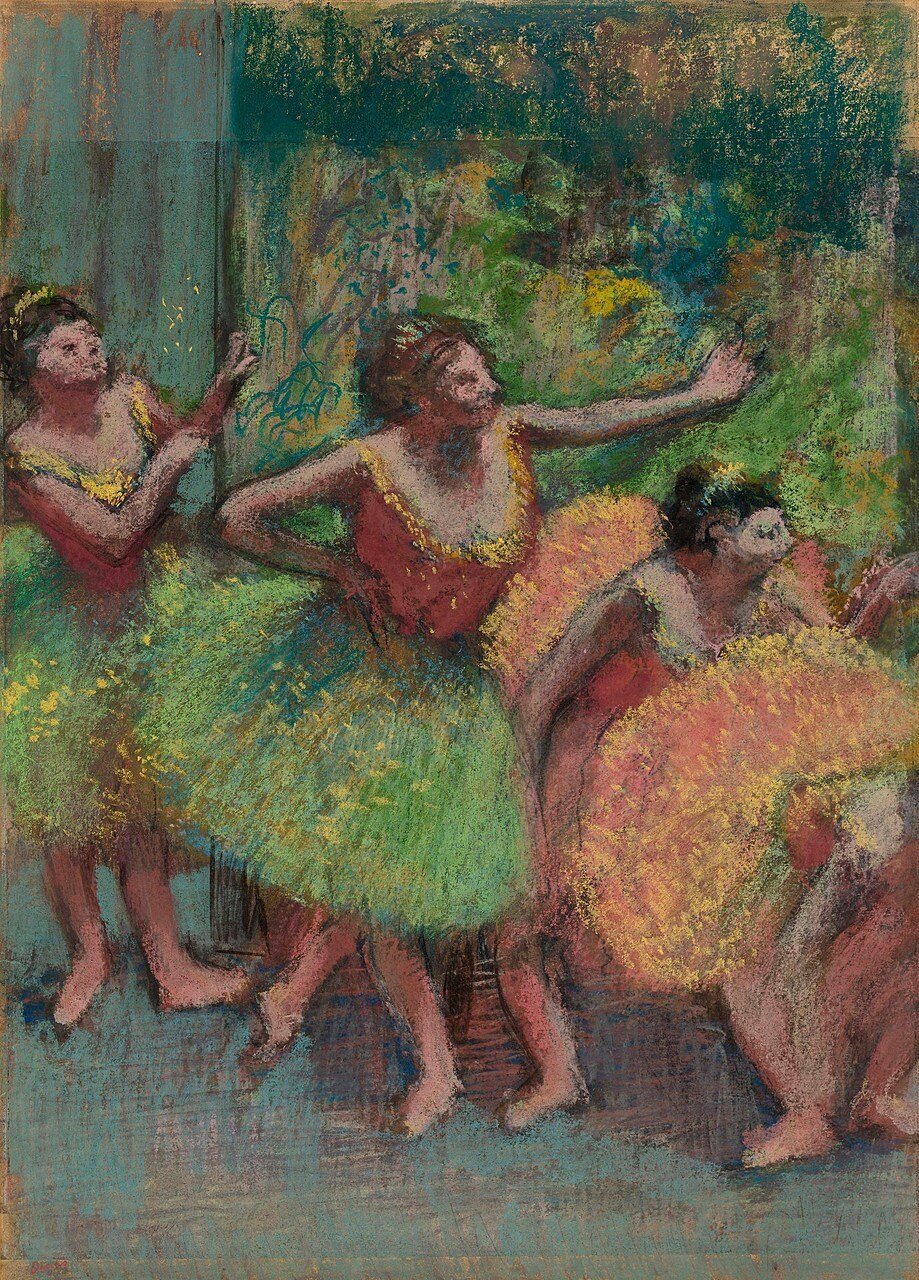
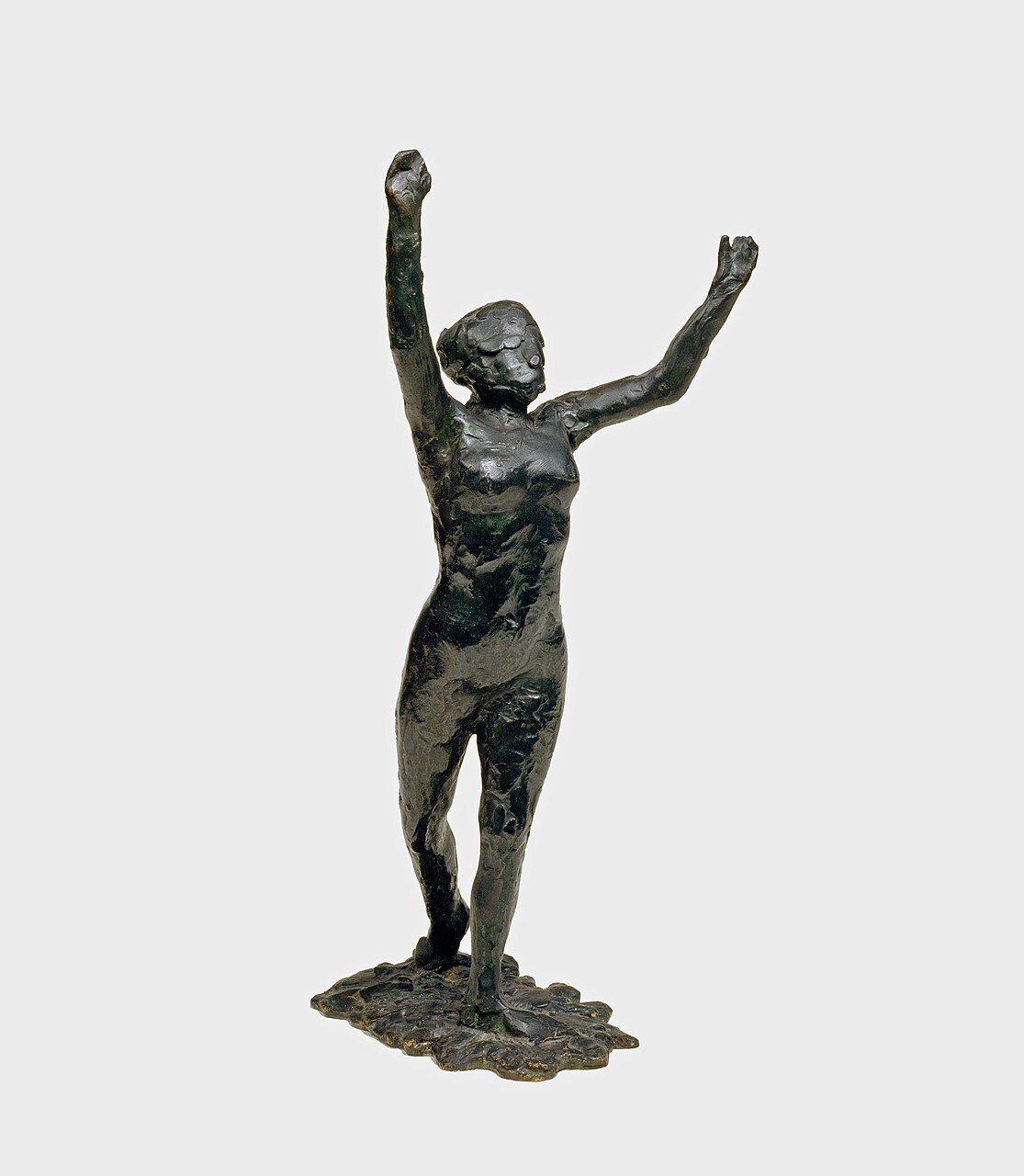
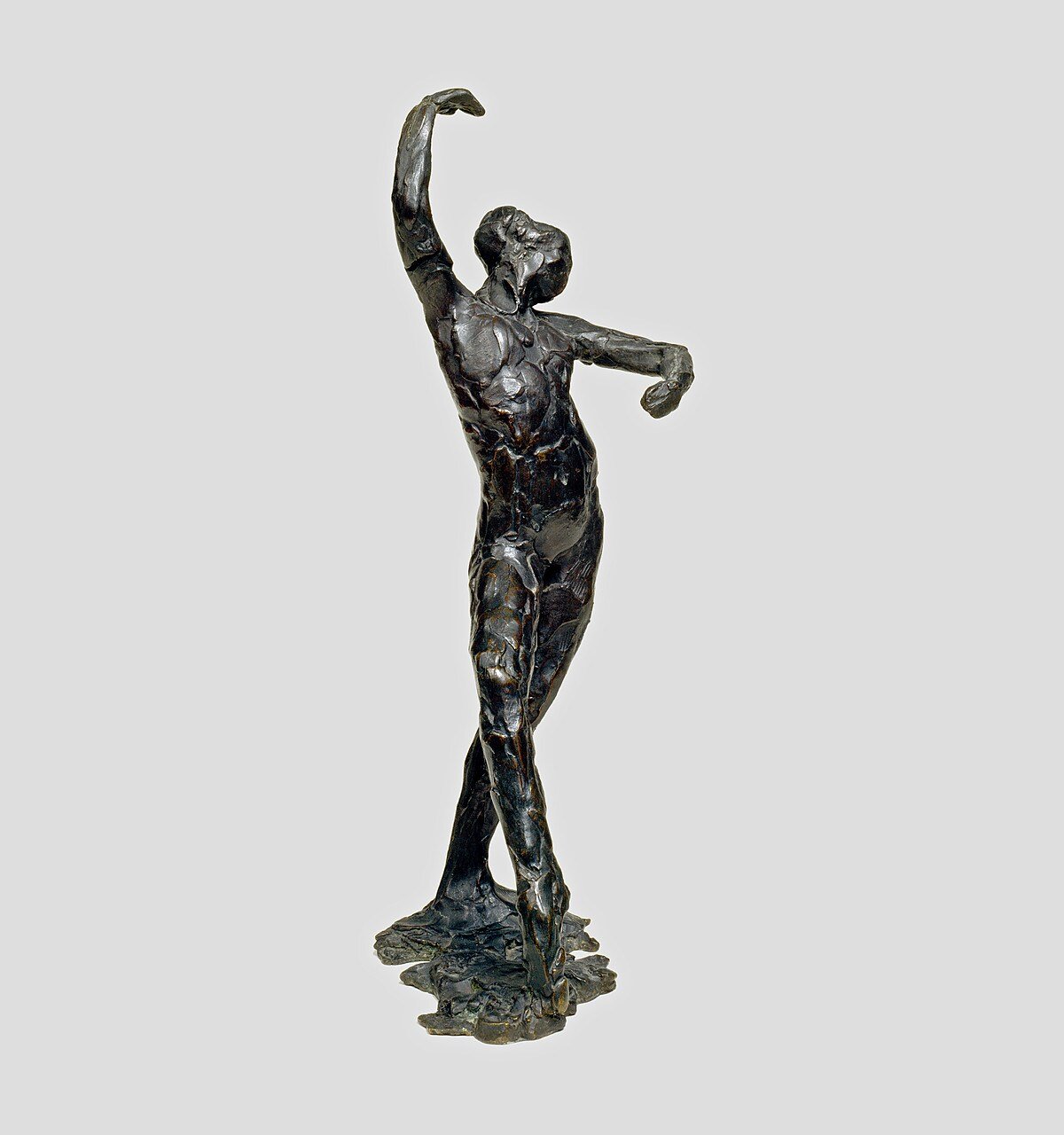
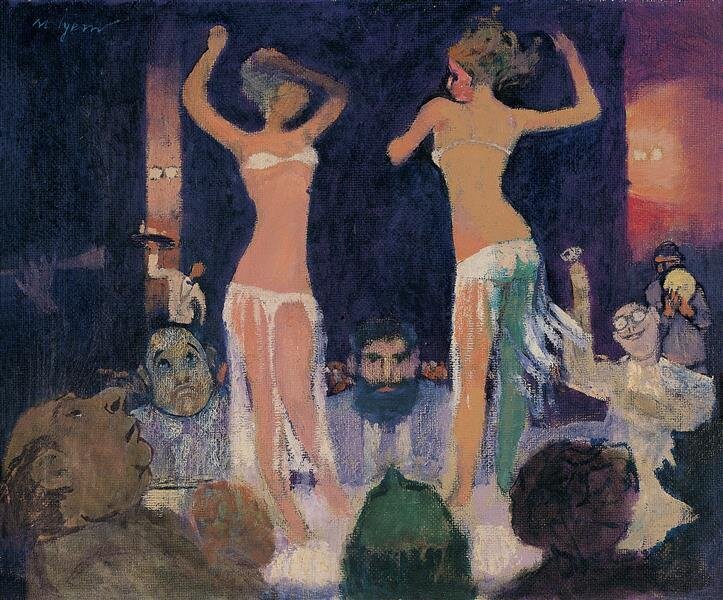
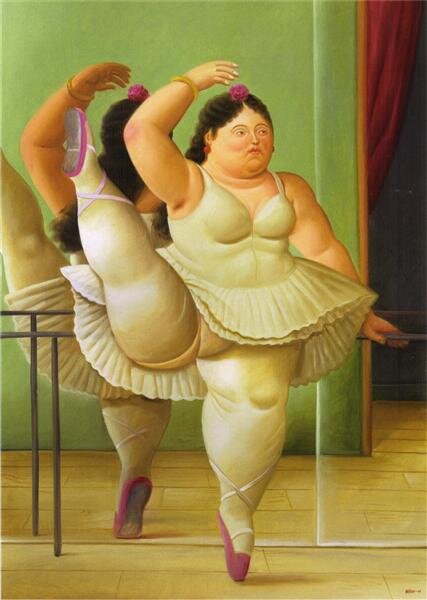
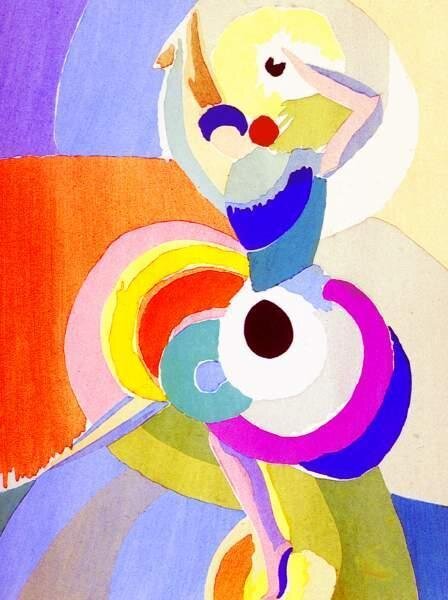


Malick Sidibé, 1963, (printed 1998), Gelatin silver print, Solomon R. Guggenheim Museum, New York Gift, The Bohen Foundation, 2001
DIMENSIONS: image: 17 1/2 x 17 5/8 inches (44.5 x 44.8 cm); sheet: 23 7/8 x 19 15/16 inches (60.6 x 50.6 cm)
b. 1936, Soloba, Mali; d. 2016, Bamako, Mali
“Malick Sidibé opened Studio Malick in the Bagadadji neighborhood of Bamako, Mali, in 1962. Unlike those of his predecessors, his studio was an electrified indoor establishment that achieved its heyday during the 1960s and ’70s. Although Sidibé favors studio portraiture, which often commemorates special occasions and captures clients looking their best, he is arguably most renowned worldwide for party photographs that showcase his capacity to frame bodies in motion.
During the 1960s, photographic settings became more intimate, reflecting the interests and activities of youthful clientele, including domestic interiors and courtyards as well as local beaches along the Niger River. This change was enabled by technological advances, such as medium-format flash cameras and safety celluloid film, which rendered the medium increasingly accessible and portable. Of the same generation as their subjects, photographers like Sidibé and later his assistants actively participated in the social circles they depicted. Early in the decade, Sidibé’s images captured the optimism of the independence era and the ecstatic energy of Bamako’s youth expressing their individuality at neighborhood parties and dances. Participating in an international cultural revolution, these individuals rallied behind rock ’n’ roll and rhythm and blues music, pursuing social liberties and trends promoted by performers such as James Brown.
Under the repressive socialism of President Modibo Keïta (1960–68) in the mid-1960s and the subsequent military dictatorship of President Moussa Traoré (1968–91), Studio Malick’s photographs represent the irreverent attitudes and activities of men and women in Bamako who were frustrated by and defied restrictive governmental policies. Violating curfew, they organized and attended late-night parties, wore provocative Western clothing, and enjoyed imported consumer goods such as records and alcohol, at times illegally. Thus, portraits made by Sidibé and his assistants during the late 1960s and ’70s depict recalcitrant individuals enjoying forbidden freedoms.” — Candace M. Keller

Edgar Degas, ca. 1903, Solomon R. Guggenheim Museum, New York, Thannhauser Collection, Gift, Justin K. Thannhauser, 1978
"Edgar Degas’s penetrating and sometimes disturbing depictions of late 19th-century Parisian society are as much innovative explorations of movement and pictorial space as they are portrayals of contemporary life. Degas was from a privileged background, born of a well-to-do family in Paris. After studying law briefly, he turned to art in 1855, attending the École des Beaux-Arts for a time. While he became associated with the Impressionists, Degas belonged to a slightly older generation of artists, which is apparent in the naturalist style of his early portraits and interiors. But, his quintessential works date from the Impressionist decades of the 1870s and 1880s. Like his cohorts, he cast his gaze upon Paris’s electrifying society of spectacle, painting scenes of the café-concert, the opera, and the races. He also looked to those living on the fringes of this world: alienated people drinking absinthe, laundresses, milliners, and prostitutes. Perhaps, most recognizable are his ballerinas, seen in dance classes, at rest, rehearsing, and performing.
Degas’s formal investigations, however, remained paramount, and his subjects, who often seem caught unaware from unusual angles in awkward poses, are vehicles for these explorations. Blurred action and the dramatic cropping of figures or forms reveal conventions adopted from photography (which he also practiced), signaling the instantaneity that the Impressionists embraced. The cropping, together with his incongruous compositional constructions, was also influenced by the nonillusionistic treatment of space and form of Japanese prints, which had gained popularity in France during the 1860s.
In the mid-1880s, his vision began to fail and the more forgiving medium of pastel became increasingly important to Degas, who fully exploited its soft, blurred contours and coloristic effects. Likewise, the medium of sculpture allowed Degas to use his hands as his eyes in modeling the pliant wax. These sculpted studies of motion parallel contemporaneous examinations of locomotion by photographer Eadweard Muybridge, whose photographs Degas knew. Both Dancers in Green and Yellow (Danseuses vertes et jaunes, ca. 1903) and Seated Woman, Wiping Her Left Side (Femme assise, s’essuyant le côté gauche, 1896–1911; cast posthumously 1919–26) date from this period. While each work represents a certain type of exploited lower-class woman—ballerinas often relied upon the patronage of their wealthy, male admirers, while the nude woman washing in a prosaic pose was a prostitute—these works are primarily examples of his lifelong interest in gesture and movement. His deteriorating eyesight eventually forced Degas to cease making art sometime between 1910 and 1912." — Vivien Greene

Edgar Degas, ca. 1885–90 (cast ca. 1919–26):
Solomon R. Guggenheim Museum, New York, Thannhauser Collection, Gift, Justin K. Thannhauser, 1978
MEDIUM: Bronze;
DIMENSIONS: 13 7/8 x 6 x 6 1/2 inches (35.3 x 15.3 x 16.5 cm)

Edgar Degas, ca. 1896–1911 (cast ca. 1919–26): Solomon R. Guggenheim Museum, New York, Thannhauser Collection, Gift, Justin K. Thannhauser, 1978
MEDIUM: Bronze
DIMENSIONS: 15 7/8 x 6 1/2 x 7 inches (40.3 x 16.5 x 17.8 cm)